Amazing nature of Jeju Island and Museum of Stones
I told you a story about Jeju island and then we had a tour to Museum of Glasses. Today we will continue our trip today. The next destination is Museum of Stones.
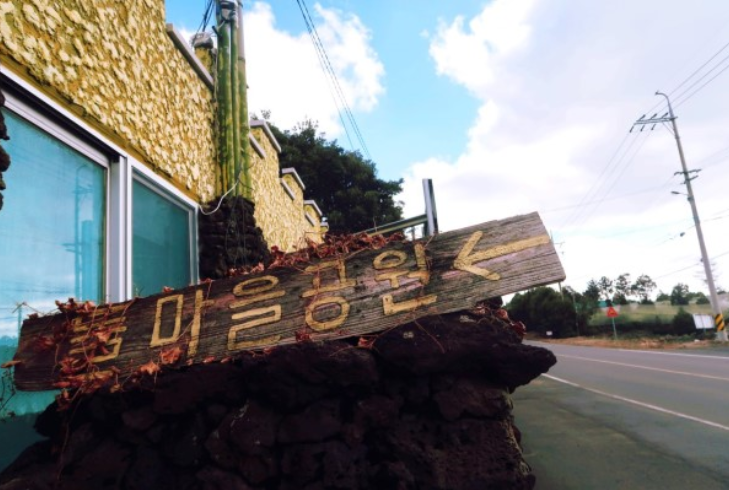
There are 2 stone museums, but I visited only one. Jeju island is volcano island, and there are a lot of different stones. Some stones look really amazing and incredible. And citizens of the island don’t miss a chance to show it to others. These stones are real nature’s gifts.
Don’t forget that Stone Park, Stone Village, Stone museum are 3 different places. Actually, there are a lot similar places on Jeju Island. Like Museum of Glass and Park of Glass, about which I told you last time.
The entrance to the park costs 5,000KRW or 5$. But for kids ticket costs 3,000KRW or 3$. The park is not so large, it will take about 1 hour to walk around it. The tour will start with a small museum with an only one hall. The local guide will tell you shortly about park itself, and some special stones. Also, he will you some tips, how and where to get insta-photos.
It is not difficult to find the park, it is located right on the road. And the main building is designed with stones. Museum is open from 9AM till 6PM.
So, coming back to the museum building, the core museum piece is a big stone with a hole of heart shape. Lovers should stand on the opposite sides, and connect their hands in the hole. So, their love will be for all eternity. I thought that this story was made up by museum owner, but who knows. The most important thing is believe, isn’t it?!
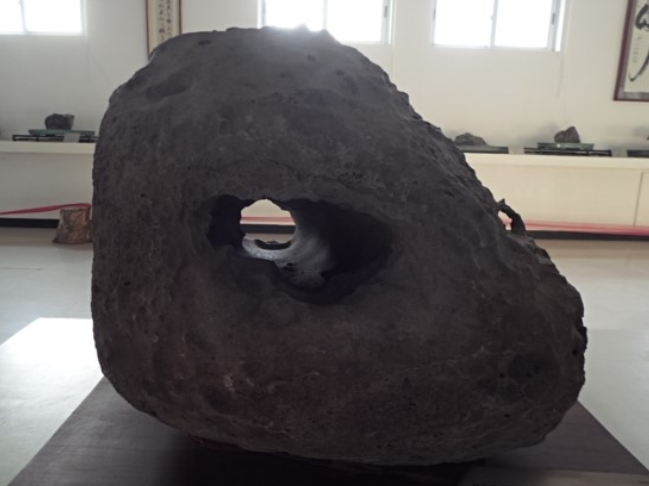
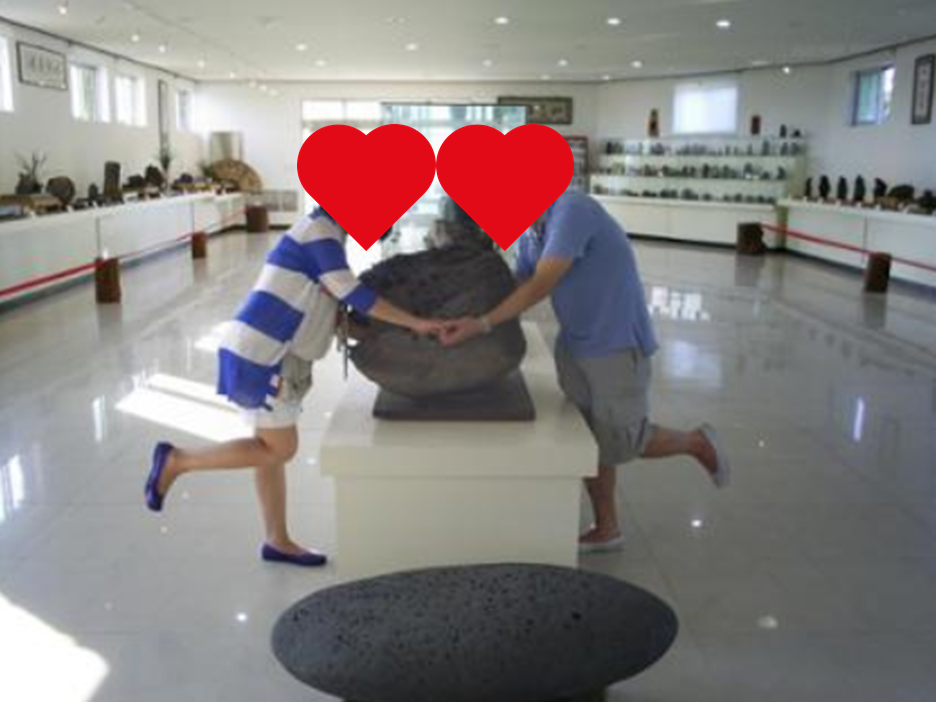
Beside it, there is a small hallasan or Halla mountain, I told you about it when I told you about Jeju island itself.
So, now is time to look at the ouside part of the Stone Village.
In the beginning a museum guide will introduce to you a small lake, the shape of which is like a Korean peninsula. A guide told that this lake is a nature’s creation. Noone adds a water to the lake, it does nature by itself.
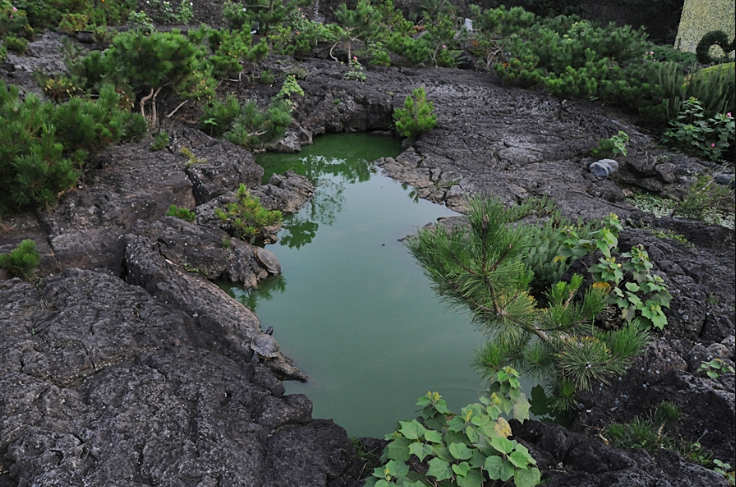
There is so-called zoo zone, where you can find a collection of stones of animal shape. It seems I have a bad eyesight, but I couldn’t see any animal there. For example, they said there is a flying duck in the center.
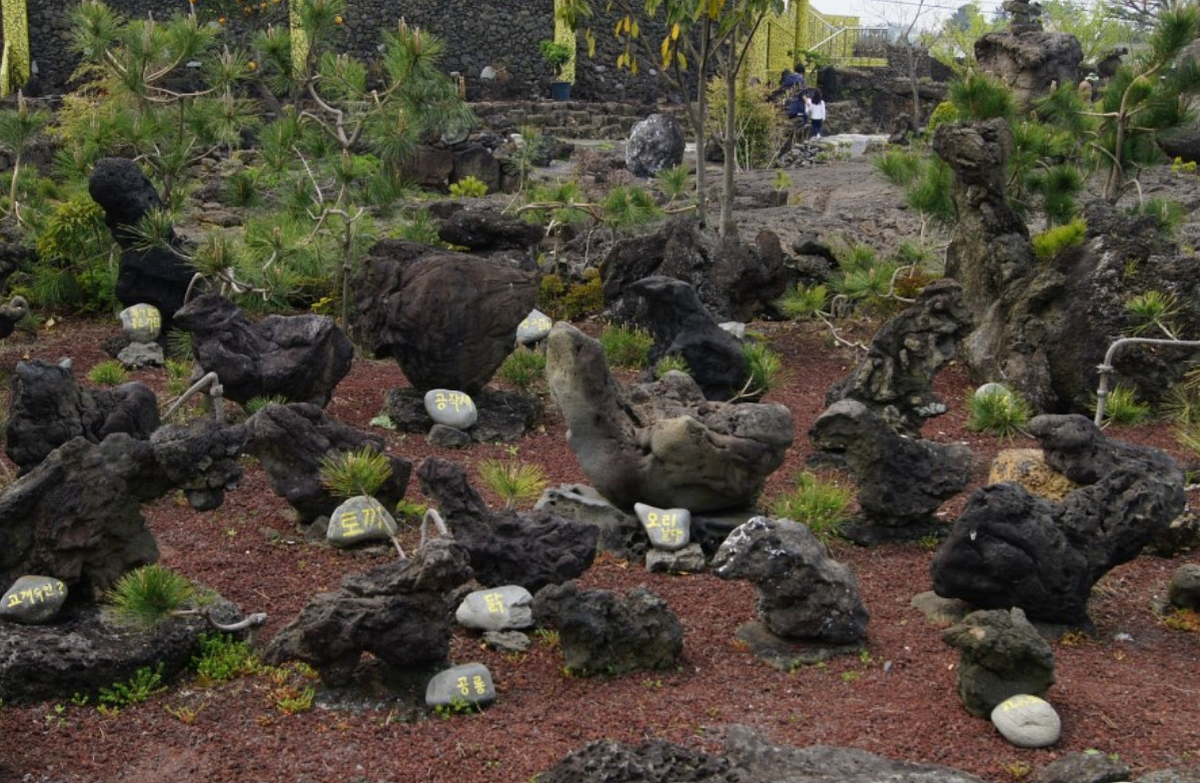
The only animal I found was an elephant.

The next zone is family zone. In that zone stones tell a story. For example, let’s take a look at this group of stones. The main heroes of that story are Dolly and Manny. The story starts from the left to the right. So, Dolly and Manny love each other a lot. They lived together, and they had grandchildren. So, at the end they became a one stone, like a one family.
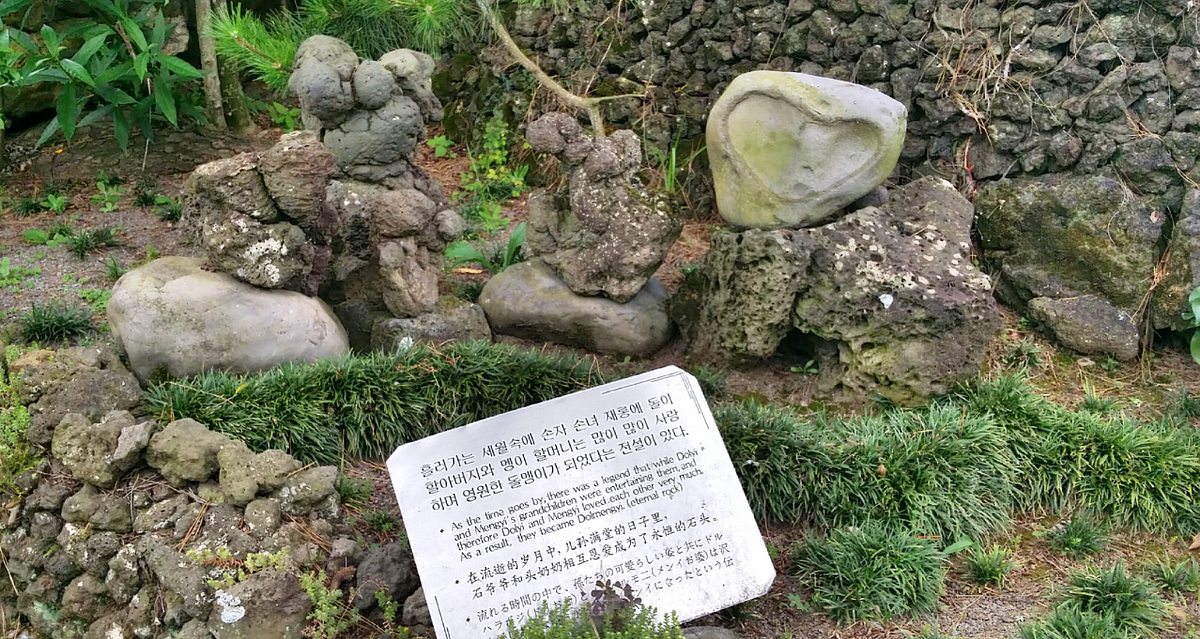
Here is a big family of Dolly and Manny.
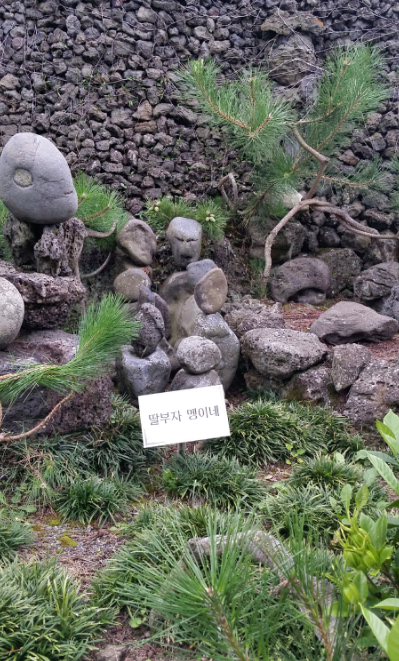
Here Dolly and Manny stand together and hug each other.
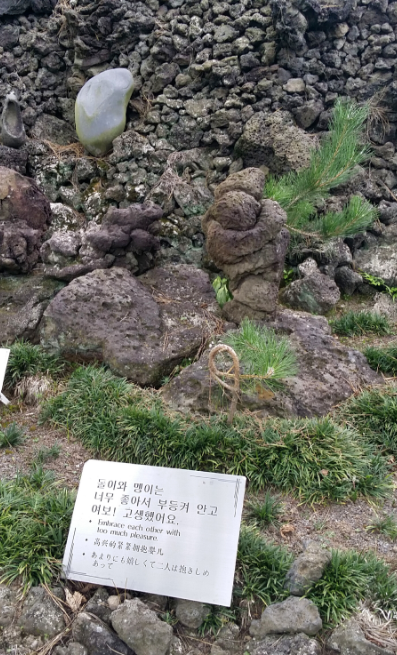
Then, we will go forward, and we will see a park with unique trees, if be precise stones and trees. Here trees grow from the stone’s core. When I looked at some of these trees, I couldn’t find where are their roots.

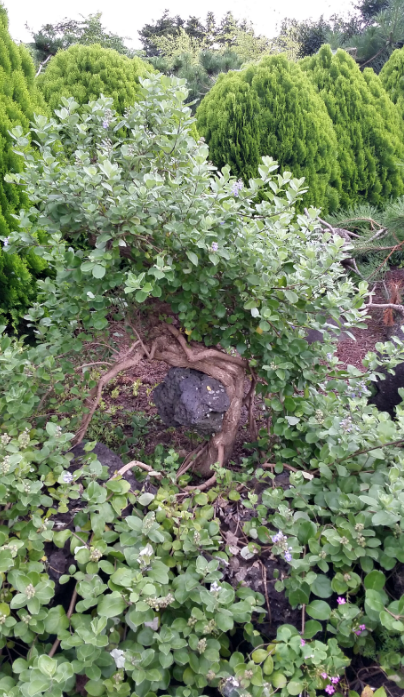
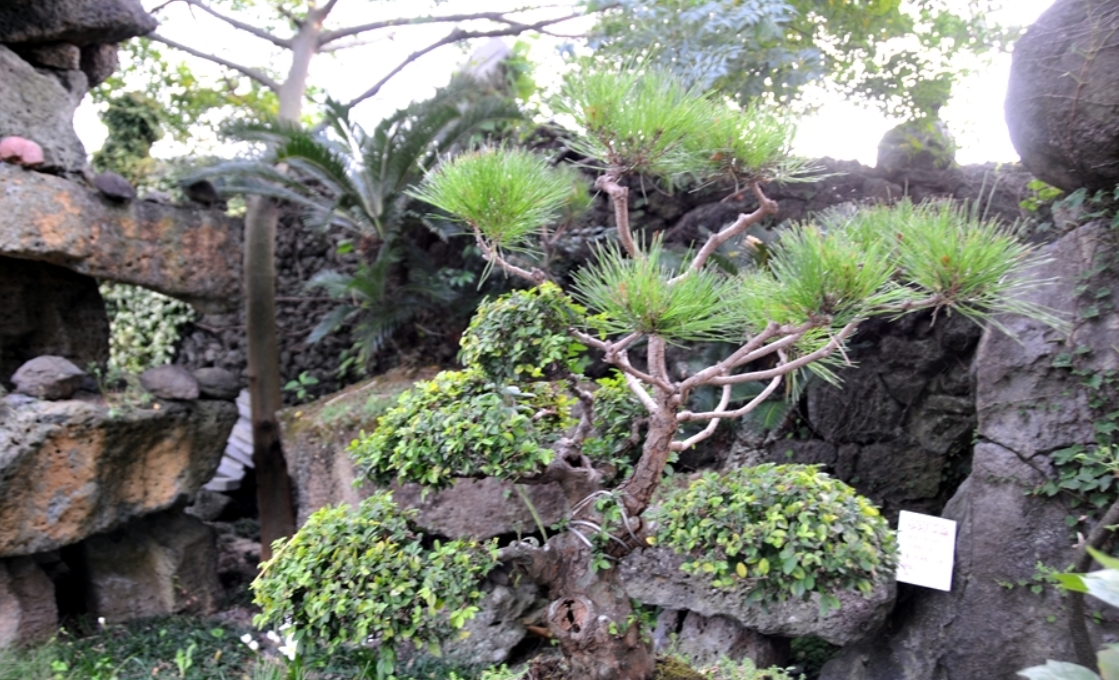
There were a couple of trees the branches of which weave with each other.
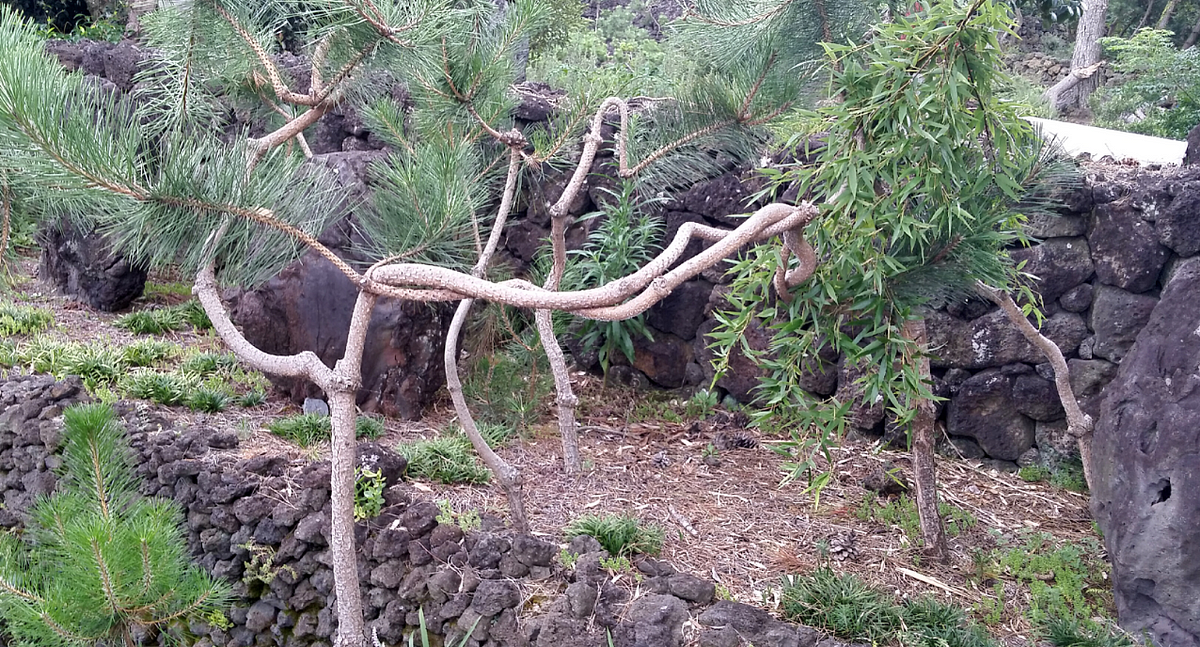
Look at this picture. This picture represents the Jeju Island. In the center is Halla Mountain, and the small stones around are the 368 small volcanos, which are spread our around the Jeju Island.
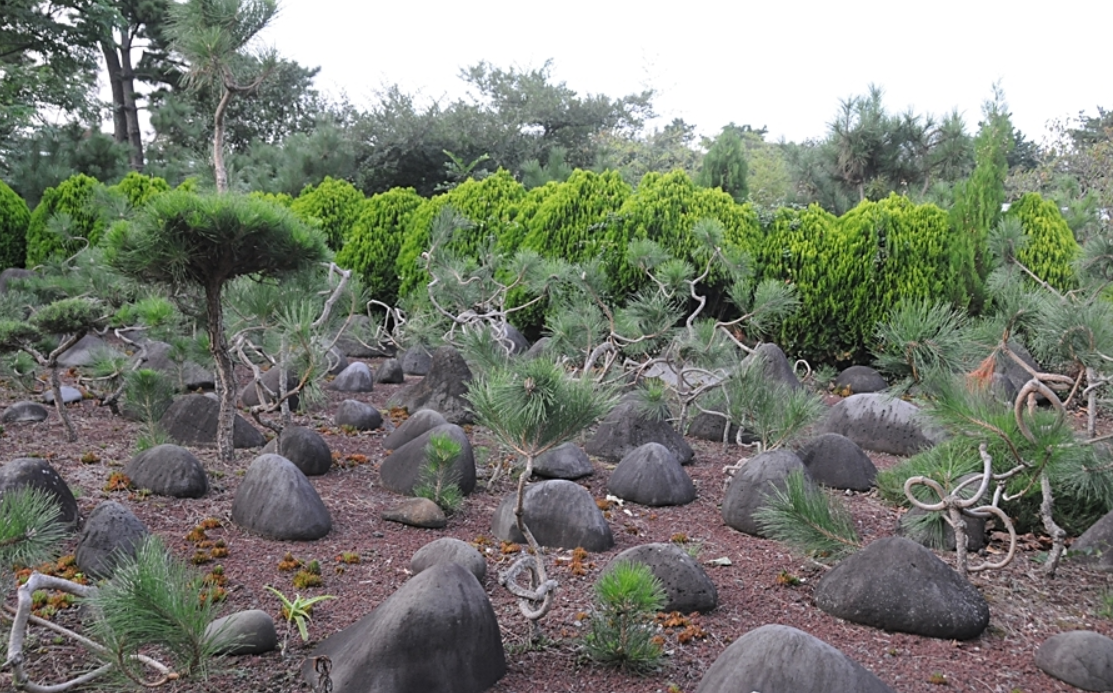
Many different Korean dramas and movies were filmed here. You can see it on the poster. By the way, Koreans like to be show up which celebrities visited their place. So you often can see photos or pictures of celebrities in different cafes.
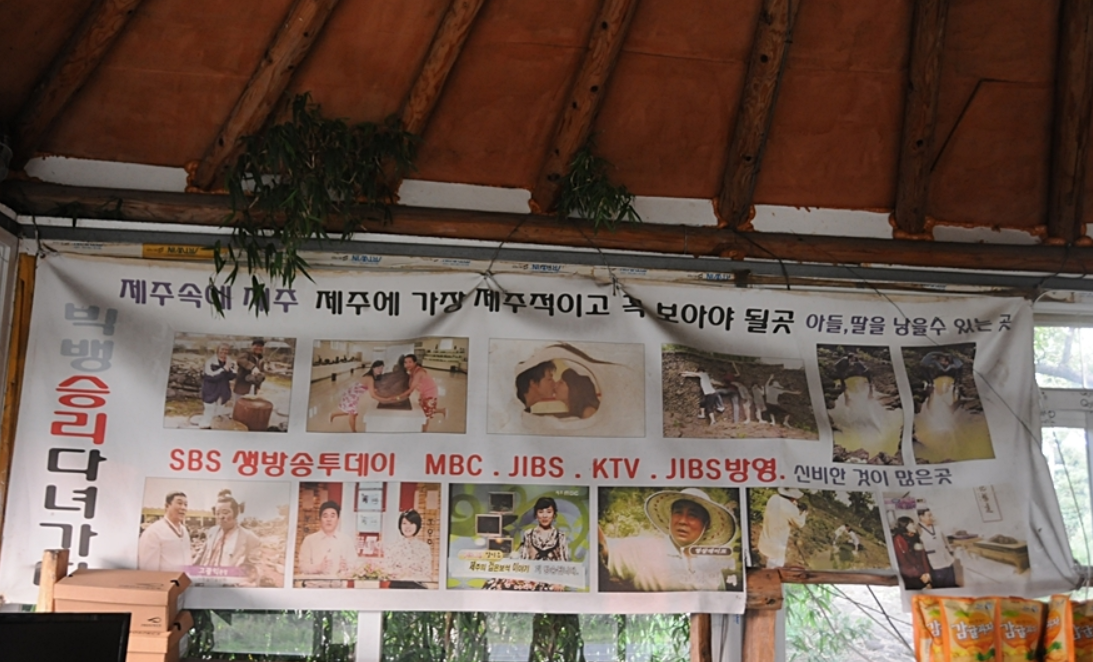
The tour we will finish with a legend, which guide told us. So, according to the legend, the Jeju island was created by grandmother Sollmunde. She had 500 sons. Once her sons went for hunting, and grandmum stayed at home to make a dinner. By mistake she felt down to the soup and dissappeared there. When sons came back home, they ate this soup. When they unsterstood what happened to their mom, they started to cry. Their red tiers covered azalea flowers, which were growing everywhere on Jeju. The boys became stone cliffes. These 500 cliffes are calling 500 generals.
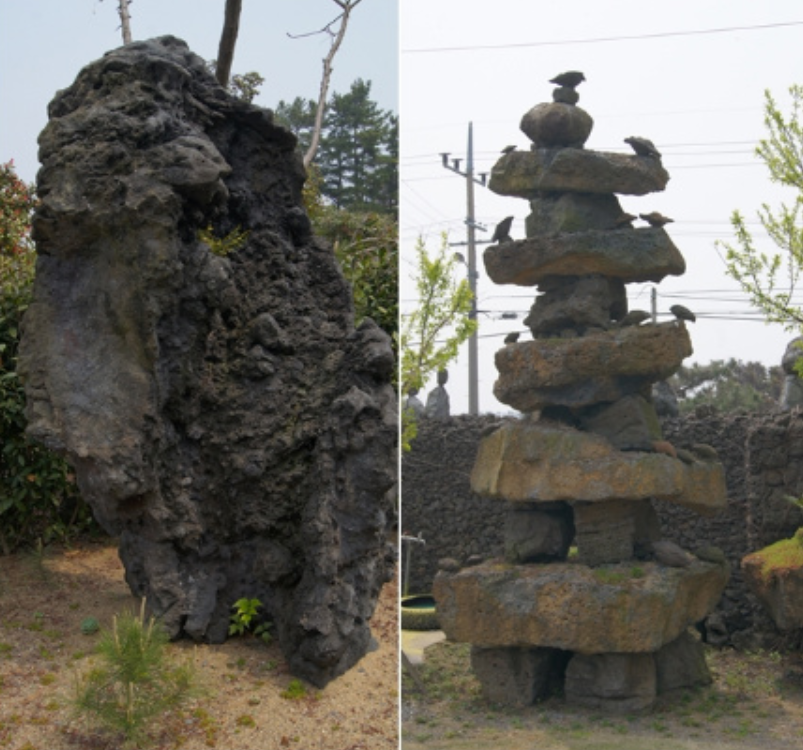
Many tourists call the trip to Jeju Island ‘Eco-trip’ because Jeju Island has an amazing nature, many parks on the opened area, exhibits of which were created by nature itself.
Комментарии
Отправить комментарий